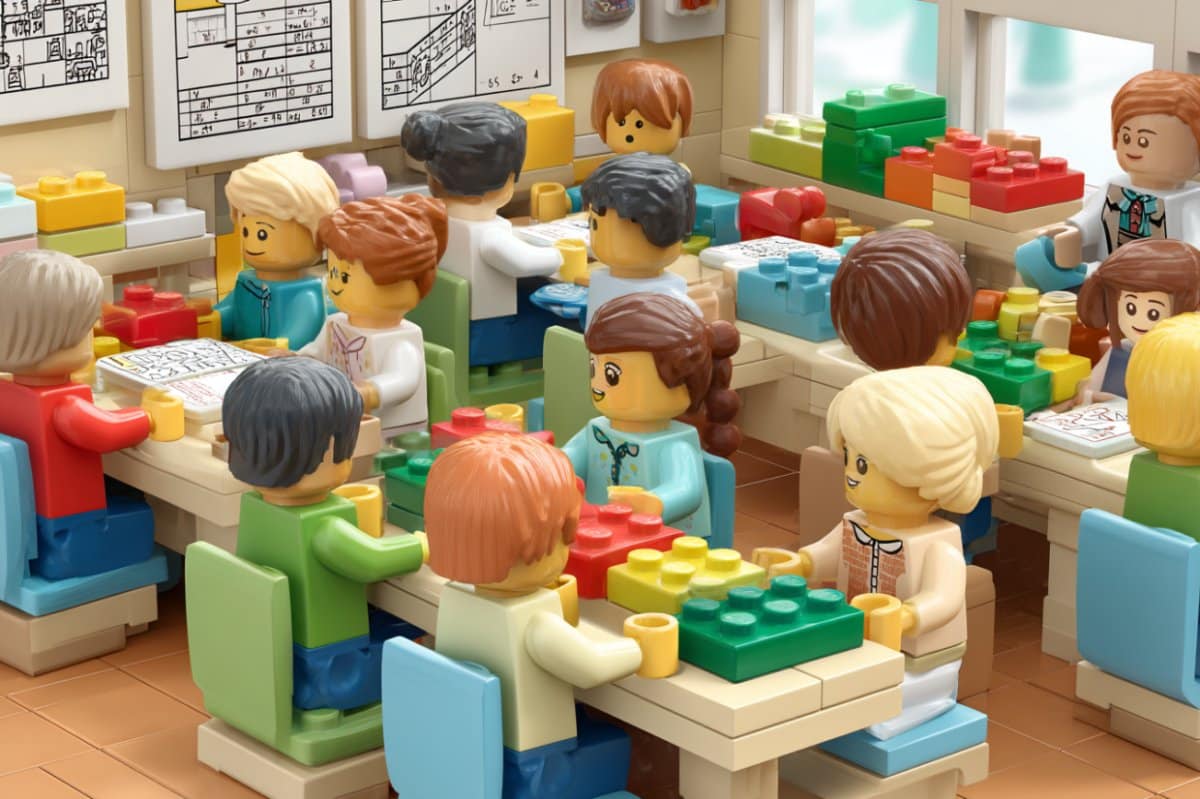Summary: Incorporating LEGO-based activities into daily classroom instruction can significantly improve children’s math and spatial reasoning abilities, according to a new study. Researchers evaluated a six-week program called SPACE, where teachers guided structured LEGO-building sessions with students aged 6 to 7.
The intervention improved students’ mental rotation and math performance, particularly among those from disadvantaged backgrounds. These findings highlight the power of simple, hands-on tools to enhance critical thinking, close achievement gaps, and make learning more engaging.
Key Facts:
- LEGO + Learning: A 6-week classroom LEGO-building program improved math and spatial reasoning.
- Stronger Gains for Some: Disadvantaged and SEND students showed the most improvement.
- Teacher-Led Success: Activities guided by classroom teachers proved highly effective.
Source: University of Surrey
A simple classroom activity involving a classic childhood staple, LEGO, could improve children’s maths and spatial ability, leading researchers to demand for policymakers to shake up the school curricula and teachers’ professional development.
A new study, led by the University of Surrey, tested incorporating LEGO building into the daily teaching curriculum, leading to tangible improvements and boosting abilities for students aged six to seven.

The study, which involved 409 children from schools in Surrey and Portsmouth, demonstrated that the six-week Spatial Cognition to Enhance mathematical learning (SPACE) programme – where teachers led LEGO-based activities – resulted in marked improvements in children’s mental rotation skills (the ability to visualise and manipulate objects in their minds) and mathematics performance.
Professor Emily Farran, Professor in Cognitive Development at the University of Surrey and lead author of the study, said:
“We’ve known for some time that spatial reasoning and maths are closely linked, however, most spatial training has been conducted in laboratory settings.
“Our study shows that spatial training delivered by teachers in the classroom is effective, with positive outcomes for their students.”
The SPACE programme involved training teachers on the importance of spatial reasoning and, via a booklet with visual instructions, how to guide their students through structured LEGO building exercises.
Teachers were encouraged to prompt students to think spatially, for example, to visualise and mentally manipulate the blocks, fostering their spatial skills.
Professor Camilla Gilmore, Professor of Mathematical Cognition at Loughborough University and co-author of the study commented:
“Addressing underachievement and reducing disadvantage gaps in mathematics is an ongoing challenge for educators and policy makers. The results of this study were clear – children who participated in the SPACE programme showed significant improvements in their spatial and maths abilities compared to those who received standard instruction.
“This suggests that simple, hands-on spatial activities can have a powerful impact on learning and are an important avenue to improve children’s achievement and enjoyment of mathematics.
Professor Farran added:
“This research highlights the importance of spatial reasoning in mathematics education. By incorporating spatial activities into the curriculum, we will equip the next generation to meet the heightened demands for critical thinking, problem solving and data-use brought about by technological and AI-enabled change.”
Spatial interventions such as SPACE have also been shown to support inclusion, particularly for children from disadvantaged backgrounds and children with Special Educational Needs and Disabilities (SEND).
In fact, children from disadvantaged backgrounds often show larger gains in mathematics competence compared with their peers, suggesting that opportunities to think and work spatially could contribute to closing attainment gaps.
About this learning and neuroscience research news
Author: Dalitso Njolinjo
Source: University of Surrey
Contact: Dalitso Njolinjo – University of Surrey
Image: The image is credited to Neuroscience News
Original Research: Open access.
“Teacher delivered block construction training improves children’s mathematics performance” by Emily Farran et al. Mind, Brain, and Education
Abstract
Teacher delivered block construction training improves children’s mathematics performance
There is robust evidence for a causal association between spatial thinking and mathematics achievement.
However, most research has been lab-based, with spatial training delivered by researchers.
We present a teacher delivered, whole-class 6-week spatial training study that involved professional development for practitioners coupled with teacher-led LEGO® block construction training for 6- to 7-year-olds.
Using a quasi-experimental design, N = 409 children completed the training and N = 103 children formed a business-as-usual control group.
For spatial ability and mathematics, but not spatial language, children in the training condition showed improved performance relative to controls.
This finding extends evidence of the positive effects of spatial training to an ecologically valid, classroom-based, practitioner-delivered context.
The findings suggest that classroom opportunities to engage in block building using pictorial instruction are an effective activity for mathematics improvement.
Our findings have implications for school curricula where spatial thinking is largely absent; a spatialized mathematics curriculum could raise children’s mathematics attainment.







